Have you ever looked at your dog doing something weird, strange, unusual, or downright gross – sighed deeply – and then thought to yourself, ‘You know, I wonder why they’re doing that…’?
If you have, then you’re not alone! Dog owners around the world, constantly amused and/or bemused by their dog’s behavior, have a laundry list of unanswered questions which could help them to understand why their dog behaves in a certain manner.
In days gone by, that question – ‘Why does my dog do that?’ – would simply be rhetorical. Unless a dog owner was able to speak to a canine behavior expert, or perhaps ask the occasional question to their veterinarian, they were completely in the dark about their dog’s unusual habits.
However, one of the benefits of modern technology is that the answer to even the most inane of questions is available in the palm of your hand. And instead of just asking that question in your mind, you can actually harness the power of the internet to find the answer (after checking your sources and sorting through fact from fiction, of course).
In this article, we’ve done the research for you and summarized the answers to 20 of the most commonly asked questions by dog owners on the internet. If your question is on this list, you’re in good company – thousands of others just like you are asking the same questions, day after day, month after month.
If you have any questions that were not answered by this article, please visit our Facebook page and we’ll see if we can answer them for you!
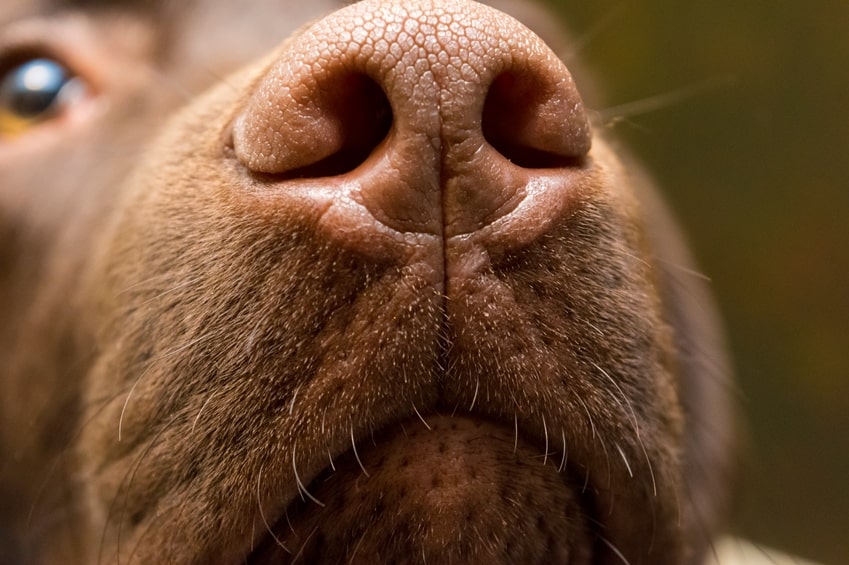
Why do dogs have wet noses?
Dogs have incredible noses, making them prime candidates for any number of specialized tasks, such as scent work, search and rescue and detection. Most of us will be familiar with the sensation of a dog nose pressed up against us, or the imprint left behind on a window pane. But have you ever wondered why a dog’s nose is so wet?
There are a couple of reasons. The saliva/mucus mixture emitted from a dog’s nose helps them to regulate their body temperature and keep them cool. In addition, they use this moisture to help them interpret different odor particles, which contributes to their incredible olfactory systems.
Why do dogs eat grass?
Almost every dog eats grass occasionally, and it is a behavior that baffles dog owners all around the world. There isn’t one straightforward answer regarding why dogs eat grass, but there are a few different theories.
One theory is that dogs eat grass to throw up because they feel unwell; however, this is unlikely, as it has been proven that most dogs do not exhibit typical behaviors associated with feeling unwell prior to eating grass, and rarely do they throw it up afterwards.
A more likely explanation is that dogs eat grass because it serves as a source of dietary fiber and helps move food through the digestive tract. Another possible reason why dogs eat grass is because the ancestor of the dog – the wolf – is a scavenger who also consumes grass as a dietary need. Wild canines also consume the nutrients found in grass through the intestines of their prey (who typically eat large amounts of it), whereas domestic dogs do not, implying that there may be a physiological urge to eat grass.
Finally, it is believed that some dogs will eat grass out of boredom or anxiety.
Why do dogs hate cats?
The idea that dogs just have an irrational hatred for cats (and vice versa) isn’t based on any factual evidence – if anything, it is just a societal myth that is perpetuated when we talk about ‘dog people’ and ‘cat people’. The reality is that many dogs and cats can co-exist in peaceful harmony.
But this myth must have originated somewhere, right? Well, think about it this way – dogs have an innate desire to chase and hunt which has been part of them for centuries. A smaller creature – whether it’s a cat, a squirrel, or even another dog – can trigger this natural response. Given that dogs and cats have been the two most popular household pets in the United States for a very long time, it is perhaps unsurprising that cats are probably fed up of being chased, cornered or forced into hiding from their canine housemates. Dogs will always chase cats, and cats will always be tired of it, but this is probably where the narrative of ‘dogs vs. cats’ originates – and why it will continue for a long time to come.
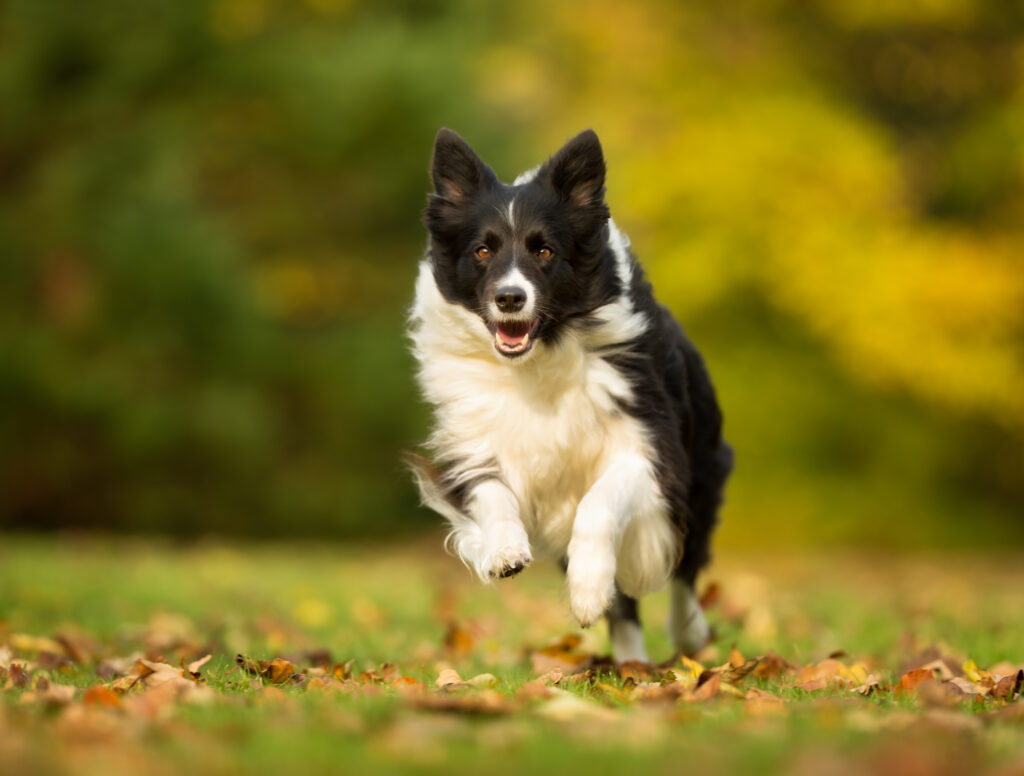
Why do dogs get the zoomies?
Common in younger dogs (but not unknown in older dogs, either), ‘zoomies’ are a completely normal and natural canine behavior. They often result in your dog sprinting in circles, repeating laps of your yard, or generally displaying signs of uncontainable energy.
Zoomies are a release of pent-up energy in your dog. When a dog has been confined to its crate for a while, or woken up from a long sleep, their natural energy levels are suppressed. Therefore, when they finally have the opportunity to express that energy, it is like an explosion – it comes out all at once and can lead to frenetic episodes of charging around your home or yard.
Why do dogs like squeaky toys?
Not every dog loves the noise of a squeaky toy (and neither do many humans, for that matter), but most dog toys on the market will have a squeaker of one sort embedded inside them. For those dogs that can’t get enough of a squeaky toy, there are a couple of theories behind their obsession.
When a dog chomps down on a squeaky toy, it provides immediate gratification – the sound of that squeak. Studies show that the squeaking noise triggers the reward center in your dog’s brain – so it is no surprise they want to do it over and over again! It has also been suggested that the squeaky sound mimics the noise made by small rodents; many dog breeds are hard-wired to respond to these types of noises.
Why do dogs sleep so much?
The average dog requires approximately 12-14 hours of sleep per day. Although dogs do have one long sleep session at night, just like humans do, their REM cycles differ from ours. Human sleep patterns begin slowly, and eventually roll into a long deep sleep cycle; however, dogs enter the deep sleep portion of their REM cycle significantly faster and come out of it just as quickly. Because dogs are always ready to ‘spring into action,’ their REM cycles are more disrupted, and it is believed that they require more sleep to compensate for the lack of quality sleep that they get during their nightly sleep by taking more daytime naps.
One other reason why dogs probably sleep so much is due to boredom. Most dog breeds were developed for a specific job. They partook in these activities regularly, sometimes daily, and for long periods of time. Most modern day pet dogs no longer participate in the jobs they were bred to do, and spend a great deal of time in their home environment with little mental or physical enrichment. Sleeping is a way that they can pass the time when they become bored.

Why do dogs wag their tails?
Dogs use their tails as one of their tools of communication. In the same way as a human might use hand signals or body language to express the way they are feeling, your dog will use its tail to indicate excitement, nervousness or a range of other emotions.
A dog wagging its tail is typically associated with a happy, playful disposition – and this is usually true. Vigorous tail wagging is likely to indicate a high state of excitement. You can actually learn a lot about your dog’s state of mind by observing its tail position. The tail’s natural position will indicate relaxation; if the tail is tucked between your dog’s legs, it can show anxiety or submission; a higher-than-usual tail can indicate arousal or even aggression.
Why do dogs shake?
There is no single reason why dogs shake, and it is up to owners to recognize when their dog is exhibiting behaviors that they do not typically display, and if the shaking seems to be coming from a positive or negative place.
Dogs frequently shake when they are excited and consequently have extra energy that isn’t being expended. Shaking is a way to release this energy and is their body’s way of keeping them still when they feel like speeding off in a different direction.
Dogs can also shake if they are in pain. Pain can cause muscles to tense up, and shaking is a typical behavior in arthritic dogs or dogs with joint pain. Another reason why dogs shake is due to fear or anxiety, and in this instance the shaking is considered a form of quivering. Similarly to humans, dogs also shiver when they get cold. In an absolute worst-case scenario, certain serious health conditions can result in shaking. These conditions are typically accompanied by other unusual symptoms, and dog owners should contact their veterinarian if they notice shaking accompanied by symptoms such as loss of appetite, discharge or vomiting.
Why do dogs eat poop?
To most humans, consuming feces likely sounds like a worst nightmare scenario; however, to dogs, this behavior is actually fairly normal!
Dogs might eat poop for a variety of reasons, all of which are natural for them. Dogs are scavengers whose wild counterparts consume a variety of unique food sources that we might deem gross, and this biological similarity can still be seen in many domestic dogs. Dogs will also consume feces if they are nutrient deficient and attempting to make up for these deficiencies, or if they are not absorbing all the nutrients that they need because of health issues or a biologically incompatible diet.
Hunger in itself can cause dogs to search for food in places they may not otherwise, so if your dog is not getting adequate calories from their food, or if they have a condition that causes them to be constantly hungry (such as thyroid problems or parasites), they might begin eating poop in an effort to feel full.
Finally, it is theorized that dogs might eat poop if they are enzyme deficient and having issues effectively digesting their food. When wild canines consume the digestive tracts of their prey, they also consume the natural enzymes contained within the GI tract walls. Commercial dog foods do not typically contain the same amount of enzymes, or the same types of enzymes, found in in a wild canine’s typical diet, which could result in domestic dogs seeking these enzymes from other sources.
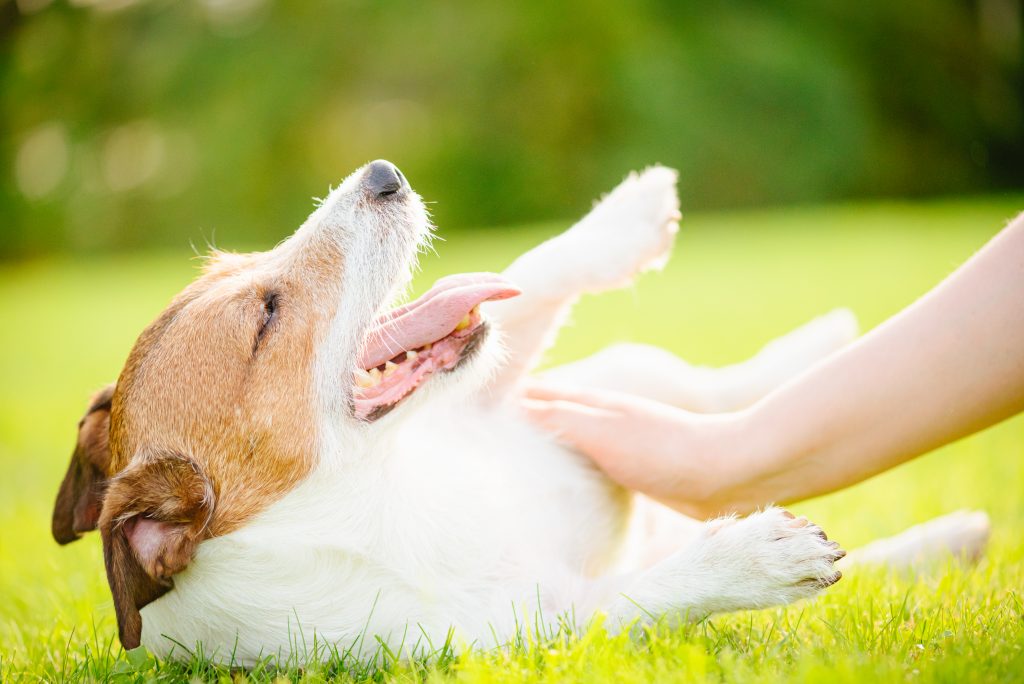
Why do dogs like belly rubs?
We all know that one dog who just can’t get enough when it comes to belly rubs. They don’t need an invitation to roll onto their backs and lift their paws in the air, awaiting the petting of their owner. But why do dogs enjoy this sensation so much?
Well, there are a few theories. Dogs are able to itch most parts of their body – but they aren’t able to get to their belly. For a dog with itchy skin, the feeling of a belly rub from their owner can help, literally, to scratch that itch (think about a time when you’ve needed someone to get that itch on your back – feels good, right?). This activity can also release endorphins and oxytocin in both dogs and owners, helping to strengthen the bond between the two of you.
Why do dogs howl at sirens?
There are several hypotheses regarding why dogs howl at sirens; however, there is not one definite reason behind this behavior. One of the most prominent theories is that dogs do it because howling is a natural form of communication for them and they enjoy the act of howling. Wolves utilize howling as a primary form of communication, and it helps individual wolves locate pack members and survive. An Austrian study tested if howling was directly related to stress in domestic wolves, and the results concluded that it was not. Researchers did realize, however, that wolves tended to howl alongside each other and often when an important companion was absent.
It is believed that dogs simply enjoy the act of howling, and certain breeds are more likely to participate in this innate behavior than others. Dogs have also been known to howl in unison with cell phone rings, pianos, and other high pitched sounds.
Another common belief regarding why dogs howl at sirens is that the siren is ‘hurting the dog’s ears,’ or scaring it. Although a popular idea, dogs who are scared naturally attempt to increase distance between themselves and the item triggering the fear response. This results in reactions such as running away, displaying avoidance behaviors, quivering and hiding – none of which are enacted in unison with social behaviors such as howling.
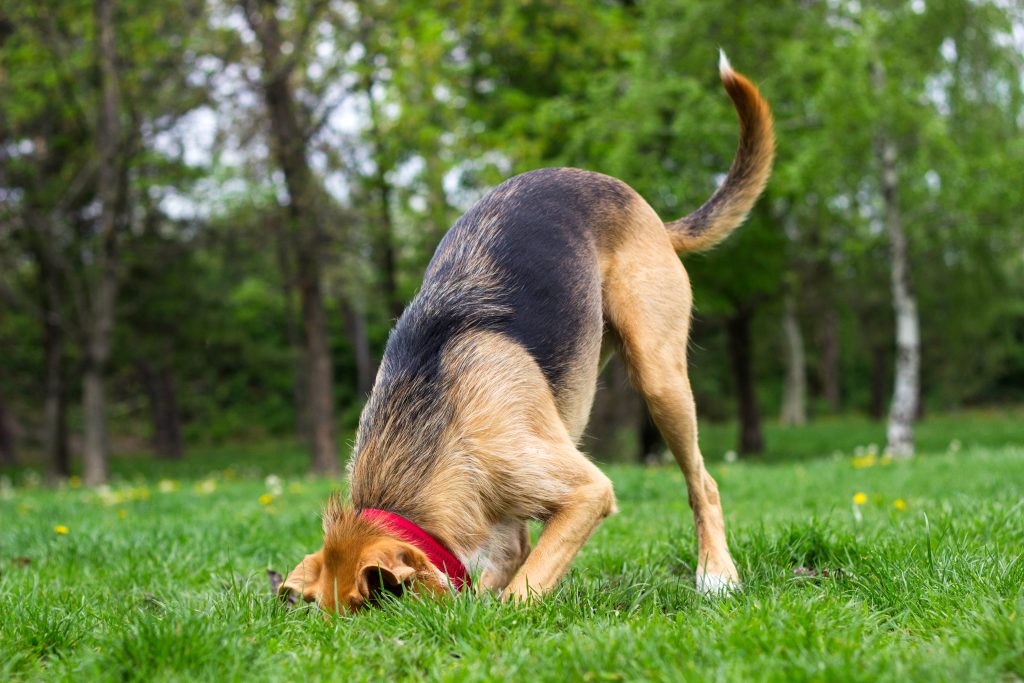
Why do dogs bury bones?
Have you ever handed a bone or toy to your dog, only to see them bury it in your yard? There are a couple of reasons why your dog might bury a bone or another object.
Centuries ago, wolves and wild dogs would bury food and other valuable items to protect them. In particular, burying food underground – out of direct sunlight – is a great way to preserve these items for future meals. In an environment where food may have been scarce and wolves may not have known when their next meal would arrive, burying the ‘leftovers’ for future use became a habit for survival. This trait has remained with some dogs, even if today, most dogs don’t have to worry about where their next meal will come from.
In addition, dogs may bury bones for other reasons. They may be stressed or anxious and looking to protect belongings which are valuable to them, or they may simply be bored and trying to give themselves some physical or mental stimulation.
Why do dogs bark in their sleep?
We’ve all heard this, right? You’re sitting on the couch, and your pup is sleeping peacefully next to you or in their bed. Suddenly, they start to make the faintest of noises. You start to focus on them and listen to their noise more intently. It transpires that they are barking – even as they’re sleeping!
This behavior is actually very normal. Your dog is dreaming, and when this happens, a dog uses all of their senses. In addition to the noise, you may even see their ears, eyelids or paws move, too. Whilst a dog can’t keep a dream diary or sit with a therapist to give a first-paw account of what their dream entailed, researchers believe that a dog’s dream will be formed of activities which took place during the day – much like their human owners.
Why do dogs chew on wood?
Dogs are instinctive chewers. For younger puppies, this can be a way to relieve pain associated with incoming teeth. Older dogs may chew to relieve stress, keep themselves entertained, or maintain healthy teeth and jaw-strength. Chewing on wood helps your dog to fulfill this instinctive need.
Whether it’s a stick or a piece of furniture, chewing on wood can actually lead to undesirable consequences for your dog, particularly if they end up consuming it. Smaller pieces of wood can cause splinters to become stuck in their mouth or throat, whilst larger sticks or objects can become lodged in their digestive tract and cause severe health problems. If you’re taking your dog on a walk or letting them play in your yard, monitor them regularly to make sure they do not consume any wood.
If your dog is chewing on wooden tables, chairs or bookcases in an indoor environment, redirecting this behavior with a durable chew toy can fulfill your dog’s chewing habit (and save your furniture from unwanted damage!).

Why do dogs roll in the grass?
Have you ever noticed how some dogs just like to roll around in the grass? This can result in their coat becoming covered in grass, weeds and other vegetation. However, there are a few reasons why your dog may do this – and it isn’t simply because they want to have fun by rolling around!
Historically, wolves used to roll around in grass to mask their scent from potential prey. By acquiring a similar smell to their prey, it would allow them to sneak up on them unnoticed. A modern pet dog may have maintained that trait; it is also possible they may be trying to resolve an unwanted itch, marking their territory, or it may simply feel good for them.
Why do dogs have whiskers?
Whiskers are a unique attribute found on numerous animal species. They grow from hair follicles that are significantly deeper than regular hair, are a completely different texture and thickness, and contain nerve endings and blood vessels as densely packed as human fingertips.
The unique placement of whiskers, near the eyebrows, cheeks and around the muzzle, implies that their purpose is strongly tied to some of the most critical parts of a dog’s head. Whiskers are a sensory tool for dogs, and they are sensitive to less detectable stimuli such as air currents and vibrations.
Whiskers also help dogs know when they are attempting to get their head into a place that is too small for it. When whiskers hit a solid surface on all sides, a dog’s brain will be able to process that information and prevent the dog from attempting to move their head any further. Whiskers also serve a secondary purpose as communication enhancers. When dogs react to their environment, the whiskers move with their faces which creates more obvious signals for other dogs.
Why do dogs throw up bile?
Occasionally, your dog may vomit up foamy, yellowy-greeny bile. Bile is a substance produced by the liver to help your dog digest its food. The foamy nature of this substance indicates a buildup of stomach acid, and throwing this up can indicate that your dog has an empty stomach or has gone a long time without eating.
Although virtually every dog will have vomited at some point in their life, if your dog is vomiting on a consistent basis, you should consult your veterinarian who will be able to run tests to establish if there is another cause.

Why do dogs follow you to the bathroom?
Some dogs just love to be at our sides in every situation – including during some of those moments when we’d rather be alone!
If your dog is intent on following you into the bathroom (or any other room of your home, for that matter), it could indicate that they want to remain close to you as part of their deeply-ingrained pack mentality. If you shut the door behind you, they may simply be curious as to what lies behind it. It is worth noting, however, that if your dog becomes destructive or incessantly whines when you’re apart, it could be a sign of separation anxiety which should be resolved with the help of a professional trainer.
Why do dogs eat their vomit?
This is one of the more unpleasant questions on this list, but it’s also a pretty common situation – your dog gobbles down its dinner, and shortly afterwards, it reappears on your floor in a large, unsightly mess. And then, just as quickly, your dog is straight back in there to hoover it up again. If a human vomits, our first thought is to dispose of it as quickly as possible – not start consuming it! So why are dogs different?
Well, as with many canine-related things, it comes back to their incredible noses. When a dog throws up, they don’t just see a mass of vomit on the floor. They sense food, because their highly-refined olfactory system detects that there are tasty food particles hidden within. So rather than thinking about how disgusting that pile of vomit might be, your dog is actually likely to be excited by the prospect of some food.
Why do dogs lick you?
Dogs lick humans for a variety of reasons. The first, and most common reason, is to show affection. If you have ever watched two dogs who really like each other interact, many times some level of licking is involved. You will also witness this behavior often between a mother dog and her puppies. Dogs who are familiar often enjoy grooming each other, and will lick the eyes, mouth, ears and faces of other dogs. This is an innate behavior that extends to human pack members as well, and most dogs will lick the people that they are fond of on a regular basis.
Aside from for communication purposes and demonstrating respect and familiarity, dogs also lick humans for other reasons. One such reason is that they simply like the way that we taste! Some dogs enjoy licking body care products or body oils off the skin of their human companions, and owners will sometimes notice that their dog licks them more after they have been sweating.
Dogs also tend to lick wounds because their saliva contains enzymes that help kill bacteria, consequently aiding in the prevention of infection. Finally, some dogs are compulsive lickers, and use licking as a self-soothing habit or boredom buster.

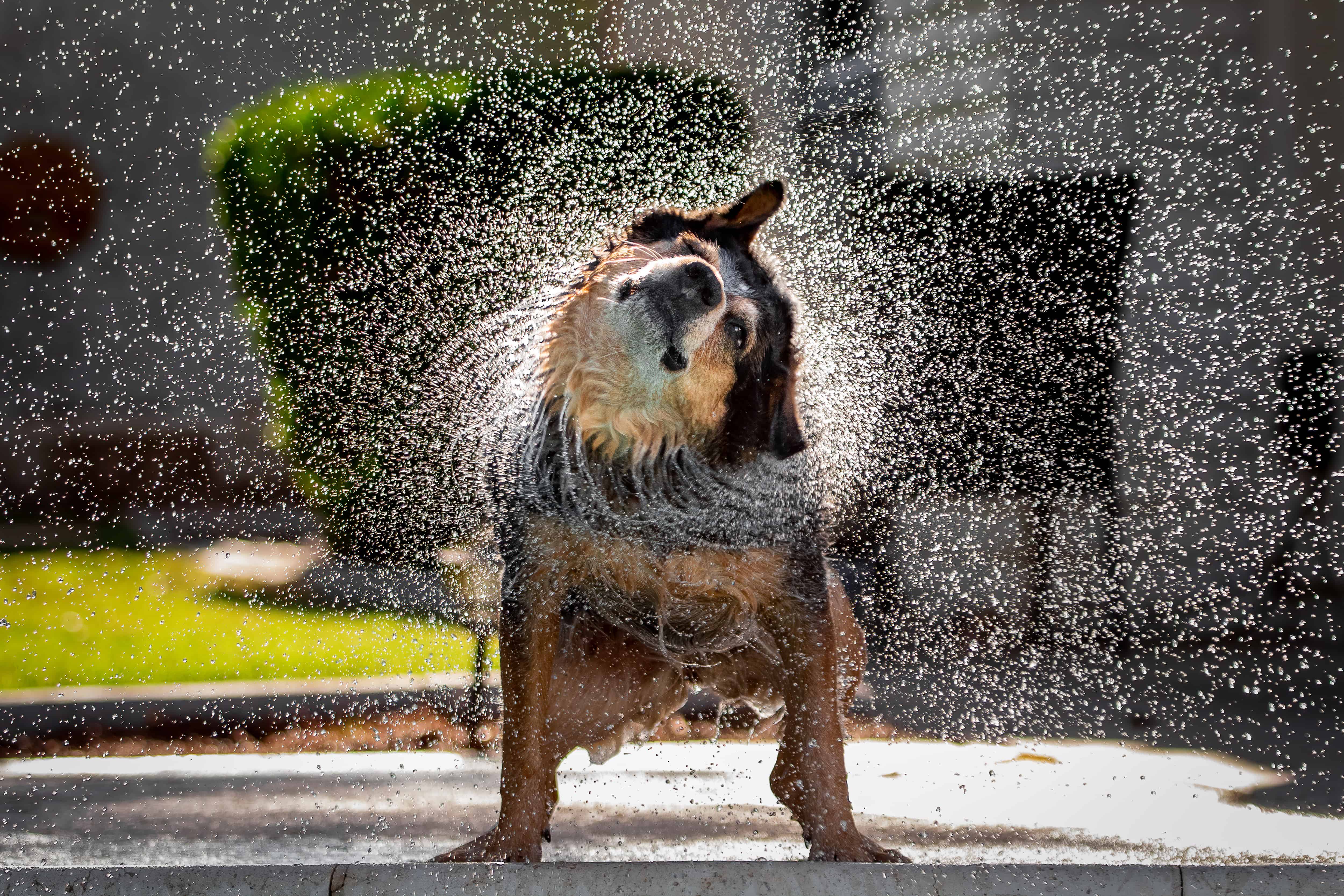
You must be logged in to post a comment.